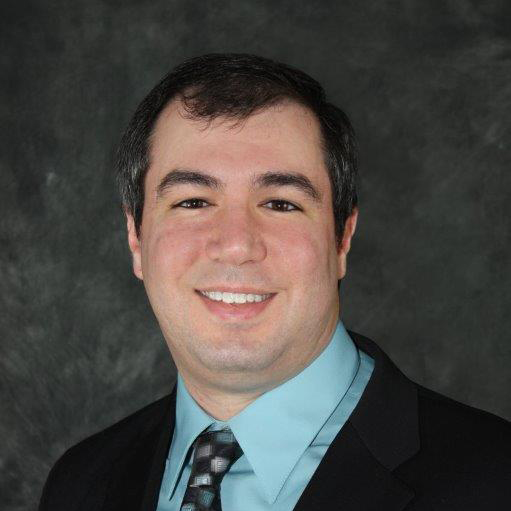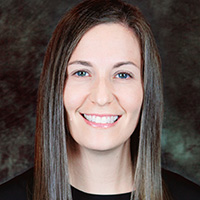Overcoming Challenges with Wound Care Biologics
- 0.5
- 1
- 1.25
- 1.5
- 1.75
- 2
Paul Anderson: Welcome to Smart Healthcare Safety from ECRI, the most trusted voice in healthcare. Committed to advancing effective evidence based care. I'm your host, Paul Anderson, and for more than 10 years, I've overseen our patient safety, risk, and quality membership programs here at ECRI. Tens of thousands of healthcare leaders rely on us as an independent, trusted authority to improve the safety, quality, and cost effectiveness of care across all healthcare settings worldwide. You can learn more about our unique capabilities to improve outcomes at www. ecri. org. Today, we're talking about wound care biologics. Products used to treat all sorts of acute and chronic wounds in hospitals and in other care settings. We'll talk about some of the challenges that providers face in terms of purchasing, inventory management, and strategies to ensure that the right products are available to caregivers at the right time. Taking into account some of the challenges those providers face, knowing which products will work for which patients. To get us started, I'll ask our two guests to introduce themselves.
Ayreece Mason: Hello, my name is Ayreece Mason, and I have been at ECRI a little over five years as a medical supply specialist in the supply guide service.
Jilllian Hillman: Hi, my name is Jillian Hillman. I have a background in tissue engineering and wound healing and bioengineering. I've been at ECRI for over four years and I am the functional equivalence development manager.
Paul Anderson: So Jillian, can we start by defining what wound care biologics are? What differentiates them from say an adhesive bandage I might have at home and what type of wounds are they used for?
Jilllian Hillman: Sure. So a bandage that you might use at home consists mostly of a pad, the material could be foam or gauze. It's usually pretty basic, there's an adhesive backing, which I'm sure everyone is familiar with, and this provides protection and it sometimes is used in conjunction with a gel. Hospitals use these bandages also, sometimes the material could be a little bit more advanced if you think of foam dressings, hydrogel dressings, Hydrocolloid dressings, and these are also used for protection. They may also have an antibacterial feature such as Silver Honey. And for the most part, in addition to protection, these products are providing absorption for wound exudate, but they can also be hydrating for dry wound. So if you have a wound that is producing a lot of exudate, you would use one that's meant for absorption, or if you have a dry wound, you would want one that's used for hydration.
Paul Anderson: Jill, when you say exudate, you mean oozy gross stuff?
Jilllian Hillman: Yes, I do.
Paul Anderson: Okay.
Jilllian Hillman: So wounds that have trouble healing might require something more than a basic bandage or a hospital grade bandage. And they're going to probably have something that has a bioactive feature, and this is mainly going to be collagen because collagen will aid in healing. So collagen provides biologic signals to the wound and it can also provide a scaffold for wound growth. So if you think about as a wound's healing, it's going to need the right signaling to heal properly and in some cases prevent scar tissue. And it's also going to need something to growing on, if you think of the building blocks of tissue. Sometimes these more advanced products could provide for growth factors as well, and these are additional building blocks. So this would be something in addition to collagen, when the tissue that is being provided is not processed as much, sometimes these growth factors are still left behind. And in some cases, the collagen and the growth factors, they do become part of the tissue regeneration. So not only are they providing the signaling, but they are part of these building blocks in tissue regeneration. So when we think of biologic wound care, we're looking at collagen dressings, acellular matrix dressings, tissue derived dressings, tissue engineer dressings. So it covers a wide variety of the types of products that can be used in this care setting.
Paul Anderson: So you mentioned there at the end, a lot of different types of products that might be used. What are some of the differences among?
Jilllian Hillman: Sure. So I built up to the most advanced products when I spoke about the first time, I'm going to start with those most advanced. So the least processed product that you would have would be donor tissue. Do you think you're taking skin from one area of the body and you're putting it on another area of the body that would be an autographed or allograph, if you're taking it from another person. That would be all of the building blocks and everything that you would need for tissue, because you're just literally taking the exact tissue. A slightly processed version of that, but it still maintains tissue form would be tissue derived products. And this is when you start to look at the amniotic, the skin, the gut derived products. And in most cases, the cells are removed or the tissues prepared in a way where the cells don't survive, but the scaffold or the collagen remains and as I mentioned, in some cases, the growth factors as well. And these play a role in the healing of the wound and as the proteins degrade or the collagen degrades, they also release new signals that can play a different role in healing, so it builds a timeline for wound healing. As you get more into the more processed products, you can take tissue and process it and isolate the collagen. So that you just have collagen, you don't have any of the other proteins or building blocks used in that type of product. And you can use this collagen to create a dressing, so these dressings will be made from collagen. They may have other additives, but you're controlling what is going in, so that you have more control over the final product and that results in less variations. So the product itself might be more consistent, but maybe less bioactive. And then also, if you look at, I mentioned towards the end of the last question, bioengineer dressings, in that case, it's a very advanced product. You might have live cells, you might have a bioactive material, but you're creating it. You're building it yourself, you're going to pick a material, you're going to grow cells on it. The cells could come from a variety of sources and you're building tissue in a dish or in the lab, and then using that to treat a wound.
Paul Anderson: So if I'm a provider and I've got a patient with a wound, let's say a difficult to treat wound, something I'm not going to put off the shelf adhesive bandage on them. I've got a lot of options that you just laid out. Would I be correct in guessing that there are specific situations where I'm going to want to use one type of product or another?
Jilllian Hillman: I would say that is correct. However, you might not know until you get into the tree treatment process. So wound care can vary greatly from patient to patient, and a lot goes into that. And you might not know ahead of time, you want to start by looking at the patient's health, the patient's history, and also, is this the first wound you're treating for this patient? Or is it the fifth wound? You might know a little bit more about how this person handles different situations. They might also have some comorbidities that might factor into how the wound may heal. The location on the body, how well you can keep it dry, how active that part of the body is might also play a role. And then the type of wound, where it's coming from in the first place, are we talking about a pressure ulcer, a diabetic ulcer that has a different place of origin than let's say, a burn or something where it's a little more acute? It's a little trial on error when you look at the patient level and we're going to get into this a little bit later, but there's a wide range of costs in some of these products. So from a cost perspective, clinicians will usually start with a low cost solution first, if they're unsure of exactly what they're going to need, because they don't want to go right into that high cost item, if they really don't need it. Some products don't have a long shelf life, and it's usually going to be the more expensive ones, if we talked about those bioengineer tissues, they're live tissue. Not only do they not have a long shelf life, but they might not even be readily available from the manufacturer, they're made on demand. So this will also affect what a facility will have in stock. So if there is a lag time in getting a product, you might use something that's available on the shelf first, just to keep the wound healthy as well. So I would say that the clinician's going to definitely try and use a cheaper product first, if possible, obvious there's sometimes risks associated with an open wound, and you're going to have to assess that on the patient level. And then as the treatment progresses, you might have to transition to a more expensive product after all other options have been tried.
Paul Anderson: Ayreece, let's bring you into the conversation. Given everything that these biologics can be used for so many different types of wounds, I'm guessing they're used in pretty high volume in most hospitals.
Ayreece Mason: Yes. Certainly. So these products are heavily used in hospitals and other care settings and account for over$ 495 million in spin annually. So with over 60% attributed to large hospitals, and when we say large, we mean hospitals that are greater than 2000 beds. The largest players are basically Integra LifeSciences and Allergan. And outside of hospital settings, there's also a great deal of them used in ambulatory care settings as well. So looking back at the data for the last year, about 95% was attributed to hospitals and healthcare systems and that's of all bed sizes. And the remaining is spread out among those ASCs as mentioned, medical groups in that clinics.
Paul Anderson: You mentioned ASCs and some outpatient settings, how about long term care? Do we see any use in skilled nursing, that type of setting?
Ayreece Mason: Sure, sure. Things that Jillian mentioned diabetic ulcers and things where there's pressure ulcers for long term facilities, those are used there as well, but that would fall under the 5% was attributed for spin year.
Paul Anderson: So definitely a much smaller proportion than what we're using in hospitals and the crosstalk.
Ayreece Mason: For sure.
Paul Anderson: Given all that and given all the different considerations that a provider might have to take into account when they're picking which product to use for a given patient. How does that affect what a hospital needs to purchase and keep available?
Ayreece Mason: So sure, as Jillian was mentioning, there're different sizes and types of dressings that are necessary for a particular patient, and it's not a one size fits all solution for that. So hospitals and inaudible facilities, we need to keep various sizes on and stock. The product is basically dependent on the patient's wound type, the cause of the wound, antimicrobial properties, the depth of the wound, the dimensions, things like that. So the facility we need to keep the various different types of products, and that also falls into physician preference. Some physicians may want to stick with one manufacturer or another, and as we know, there're several physicians at every facility, which will make it a little bit more difficult to keep everything in stock at once.
Paul Anderson: This question maybe more for you Jillian or Ayreece, I'm not sure, I think it's for you Jillian. So knowing that we've got to keep lots of different types and sizes and so on in stock, does that create, I'll say inventory issue in other words, since these are not just your simple adhesive bandages that I might go get at the pharmacy down the street. I'm guessing some of the more advanced ones, like you said, they might be on demand, they've got a short shelf life. I'm guessing there's not a dingy store room with a bunch of stacks of cardboard boxes with a stamp on it that says wound care. So do we need to think about special considerations for inventory space and storage and all those things?
Jilllian Hillman: Yeah. So I definitely think it depends on the type, as you mentioned. The products that I described can be stored, some of them room temperature on the shelf, some of them might need to be refrigerated or frozen. And then some of them, as I mentioned, are really made on demand. So they're not stored at the facility at all. And they might not even be stored at the manufacturer at all, depending where the cells are from. There's one product in particular that uses the patient's own cells, so you are sent a kit where you collect a sample from the patient, you send it back to the manufacturer and then they develop the product specifically for that patient. That's an extreme situation, but you the other end of that would be a dry product on the shelf. So the more expensive the product typically tends to be these ones that you wouldn't want to keep on the shelf, they have short shelf life. So you wouldn't want to pay for them and then have them expire. And then they're also not as frequently used, as I mentioned, you're going to start with some of those cheaper options first. And they do tend to align, the cheaper ones do tend to be the ones that can be stored on the shelf longer. And then the more expensive ones are the ones that more on demand, and you're not going to keep them at your facility.
Paul Anderson: Got it. So Ayreece, with all that in mind, what challenges do we then see among our member organizations, when they're purchasing and thinking about storing and everything, these products? Is it a question of price? Is it a question of ensuring they've got adequate options available? Is there some other factor? Probably all of the above.
Ayreece Mason: All of the above, yes. Paul. So we've seen a range of each prices from under$ 2 into the thousands. Additionally, things like physician preferences and call saving considerations, composed a challenge as well. With other medical technology, when you do need to double the order, the prices increased greatly mainly because of manufacturing costs, but things like wound care biologics, the material themselves is basically the largest part of the product. So doubling the size can actually double or triple the price even, and not because of manufacturing prices, but as Jillian was mentioning, some things are dedicated specifically to a certain patient. So it's not something that you can easily acquire. So I also wanted to mention that there're many times that wound care biologic product is based on the physical piece of skin. And so very particular specifications make something more difficult to acquire because it's special, it's not something that is off the shelf, so to speak.
Paul Anderson: Yeah, no, that makes a lot of sense, right? The more custom it is... That's very interesting. I hadn't considered what you said, just the direct correlation between the literal size of the product and the cost of it, need more material. That makes a lot of sense. Jillian, one thing before we start to wrap up, I wanted to touch on separate from the device themselves, but I'm curious about the regulatory approval process. I'm familiar myself with the medical device approval process, right. I know what that is about, physical pieces of equipment. How is that similar or different from the approval process for biologics and do those differences introduce any special concerns that a purchaser needs to be thinking about?
Jilllian Hillman: Sure. So I feel like a broken record here, but it once again, depends on the device itself or the product itself. Some dressings used for wound care do go through the 510( k) approval process. So you can look that up in the FDA database and you can see a lot of information about the product and its approval and the facility, et cetera. And these are going to be the more processed type products, the ones where they are more consistent and they are more to a standard, so to speak. When tissue is not processed, it's viewed more like a transplant, so it falls under the human cells, tissues and cellular and tissue based products, or you might know it as HCT/ P. And these are monitored by the FDA differently because every product is a little bit different because every sample or every piece of donor tissue is a little different. It's not really something that provides consistency from product to product. Yes, you're going to get the same type of bioactivity, but it's really, if you're looking at donor tissue from one person to another, you're going to have a slightly different starting material. So in that instance, when you're looking at the HCT/ P product, the tissue is tested before it's used. So you're testing maybe for contamination or maybe certain disease types. The manufacturing facility itself is approved by the FDA, so the process by which they acquire the tissue and how they prepare it is going to be approved. And the pros of this is that the product itself can be very bioactive because it has more than just collagen as we spoke of before or that the products can vary greatly depending on the donor tissue, and in some instances, they can't be terminally sterilized, so you're not getting a sterile product at the end. If you've been following the news, there was just recently an issue, not with these types of products, but other HCT/ P products, where there was a contamination and they had to go through a recall process and everything. And those are the two different routes that a product might take in this regulatory approval process.
Paul Anderson: Does that change anything for the organization that's purchasing it or the people in the organization that are purchasing it? How do I ask this? It's their due diligence, the same, right. I know what the approval mechanism is or the monitoring mechanism is, and I know who my manufacturers are, and so maybe to the purchaser, it's not a big deal what the difference is between the 510( k) versus the HCT/ P.
Jilllian Hillman: Well, I think they should be aware of the differences. There's likely, I don't want to say for sure, but there's probably some sort of consent form that's different if you're using one of these HCT/ P products. Some patients may object to certain types of these products for a variety of reasons, maybe a religious reason, just a personal preference. So I do think that the facility should be aware of which type of product you're dealing with.
Paul Anderson: Gotcha. Okay. So as we wrap up, I'll ask both of you, Ayreece, to start with you. Let's say a hospital, because they're by far majority use of these products and I'm in charge of purchasing and storing and making sure I've got these available. Where do I get started to evaluate my process? Is it a question of standardization? Is it needs assessment? What's my starting point?
Ayreece Mason: I would start by reviewing procedural analytics as a facility, just to see where there's the same product being used over and over again. So you want to make sure that you're not having redundant purchases. So you want to look into redundancies of saying in your purchases where you're able to standardize some of those products. And you'll want to use your facilities resources, like your value analysis teams, just to get a handle on what the products that you are using and where you see those redundancies and physician preferences as well. In our experience, we've found that customers typically do purchase functional equivalent items, time and time again because of physician preferences and just not knowing what they have in the inaudible data that can be equivalent to that. So in order to get down some cost savings for that, you want to look into those things at your facility first I would say.
Paul Anderson: When you say functionally equivalent, you mean I've got from multiple manufacturers, basically the same thing and that's an opportunity to standardize.
Ayreece Mason: Correct. So a lot of them have similar dimensions, similar sizes and things that you want to be considerate of, like do they have antimicrobial properties? What's the shelf life and things like that? But outside of that, there's several different ways to determine functional equivalent, excuse me, for their product where you may not need to purchase the same thing time and time again.
Paul Anderson: Gotcha. That makes sense. Jillian, was there anything you wanted to add to that?
Jilllian Hillman: Yeah. I'd echo what Ayreece said. I think that it's very often we do find facilities buying functionally equivalent products, and sometimes it is because of physician preference and sometimes there's no way around that, but sometimes that's just due to a lack of understanding of what the products are themselves. A lot of times manufacturers will use keywords or marketing terms and it makes their products sound different than another product, but in reality, that's not the case. So knowing what the product is, where it comes from, how it was processed, it can be very valuable in identifying those functionally equivalent products.
Paul Anderson: Jillian, Ayreece, thank you both so much for being with us today. You can learn more about how ECRI can help from our website at www. ecri. org, including our suite of services that can help provider organizations reduce clinical spend and enhance patient outcomes with integrated technology, decision support solutions, pricing, and utilization and analytics, recall management, evidence- based assessments, and more. Be sure to subscribe to Smart Healthcare Safety on Spotify, iTunes, Google Play, or wherever you get your podcasts to get our latest episodes. We welcome your feedback, please visit us at ecri.org/ podcasts or email us at ecri- podcasts @ ecri. org.
DESCRIPTION
In this episode, we're talking about wound care biologics—products used to treat all sorts of acute and chronic wounds in hospitals and other care settings. ECRI experts will review what wound care biologics are and some of the challenges that providers face in terms of purchasing and inventory management. Our guests will also discuss strategies to ensure that the right products are available to caregivers at the right time, taking into account some of the challenges that those providers will have in knowing which products will work for which patients.
Learn more about how ECRI can help from our website at www.ecri.org, including our suite of services that can help provider organization reduce clinical spend and enhance patient outcomes with integrated technology decision support solutions, pricing and utilization analytics, recall management, evidence-based assessments, and comparative product evaluations.
Today's Host

Paul Anderson
Today's Guests

Ayreece Mason


